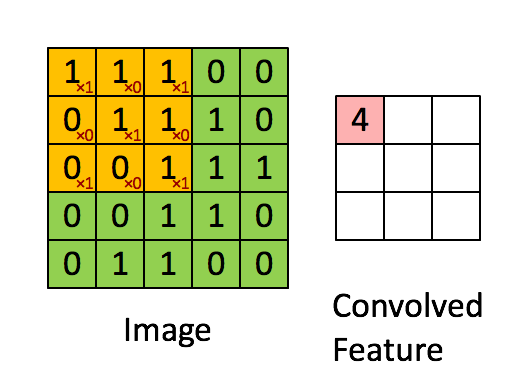I'm going to use the Winograd’s minimal filtering algorithms to introduce a new class of fast algorithms for convolutional neural networks using C and OpenBLAS. It is a first implementation of the Fast Algorithms for Convolutional Neural Networks - Paper
The algorithm that we are going to implement relize the operation in the image below.
We have extended the algorithm by using more dimension:
Image
- W x H x Channel -> It can be seen as a cube with a width, an height and a number of channels
- In our implementation we consider W = H
Kernel - R x R x Channel x K -> It can be seen as a "list of cube". We have K cubes with a dimension of R x R x Channel
Tile - A tile is a "Portion of the image" with a dimension D X D x Channel.
- The only requirement that we have is that D should be divisor of W (and H)
- We can consider (W / D) * (W / D) different tiles in a single image.
Output - The output of a tile is a matrix of a dimension of M x M
- The program will give us as an output a cube with a dimension of M * (W / D) x M * (W / D) x K
- By using a tensorflow notation a single output tile is calculated as:
output[k,h,w] = sum_{c,dh,dw} input[c, h + dh, w + dw] * filter[k,c,h,k]
but instead of using this formula we have implemented it with the winograd algorithm.
- M - dimension of an output tile
- R - dimension of the kernel
- Channel - number of channel of the image and of the kernel
- K - number of kernels
- W - width of the image
- H - height of the image
- kernel.txt - file of the input kernel
- input.txt - file of the input image
These instructions allow you to run the program on your computer.
- Install openBlas on your computer
- Install python with np on your computer
We need to compile the program, you should give to the compiler the path of the openBLAS library. I use this line:
cc -static -o test main.c -I /opt/OpenBLAS/include/ -L/opt/OpenBLAS/lib -lopenblas -lpthread -lgfortran
To run an example of the program you should follow these steps:
- Create the matrix parameters
python calcMc.py M R
- Create the input image
python createInput.py W H CHANNEL input.txt
- Create the input kernel
python createKernel.py R CHANNEL K kernel.txt
- Call the C executable program with the correct parameters
./test M R CHANNEL K W H kernel.txt input.txt
This project has been developed by Me and Andrea Facchini
